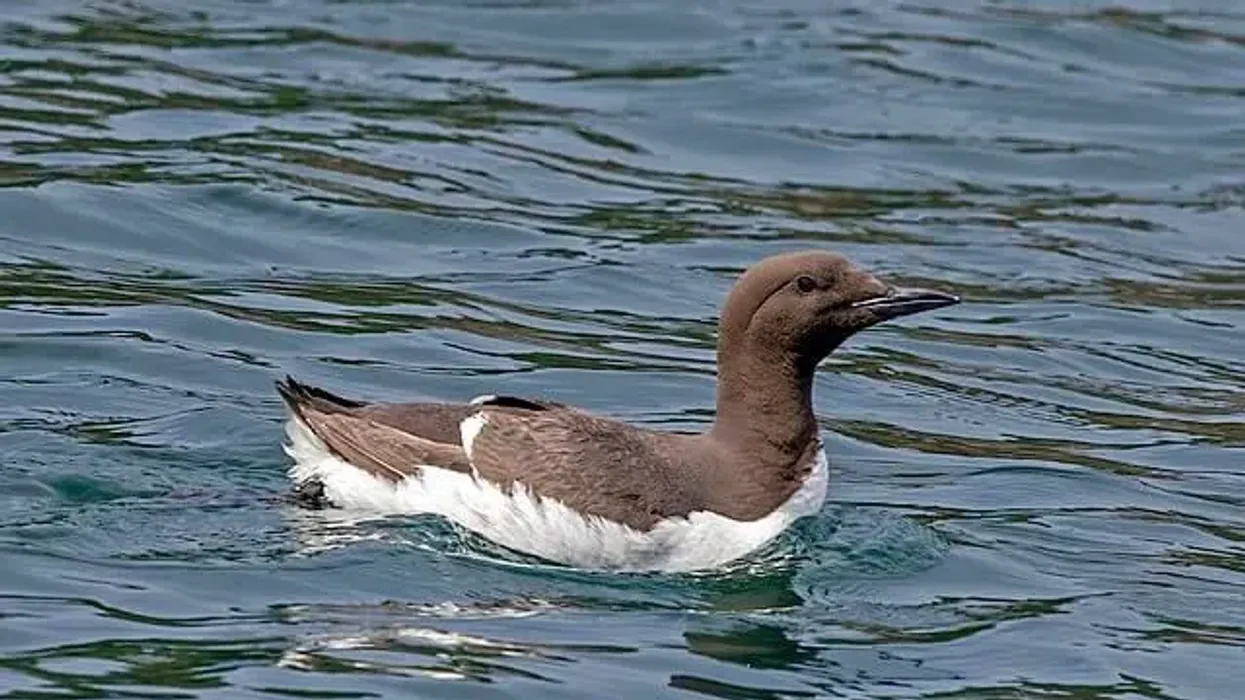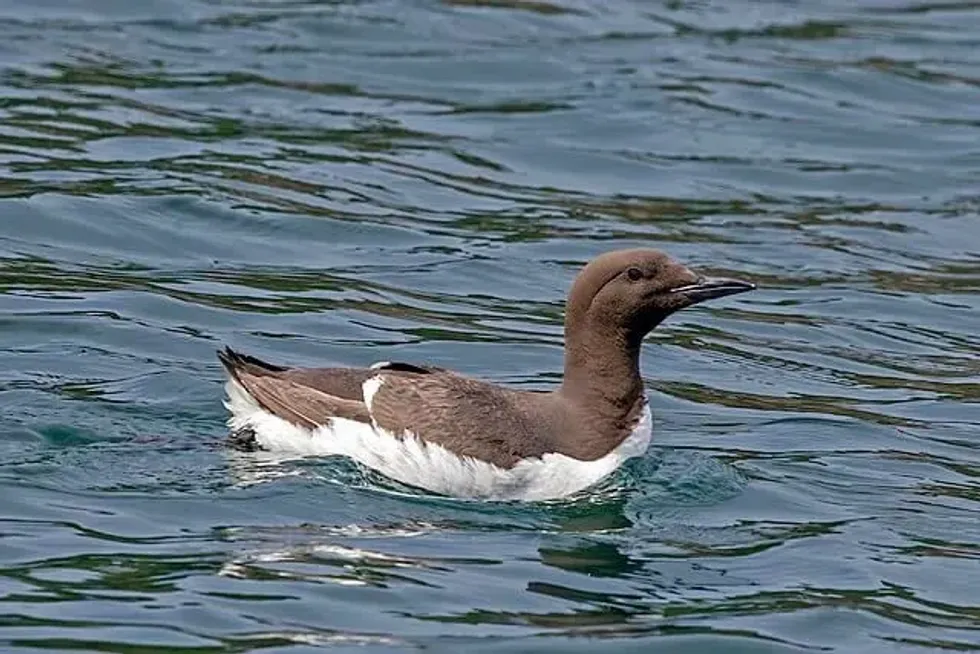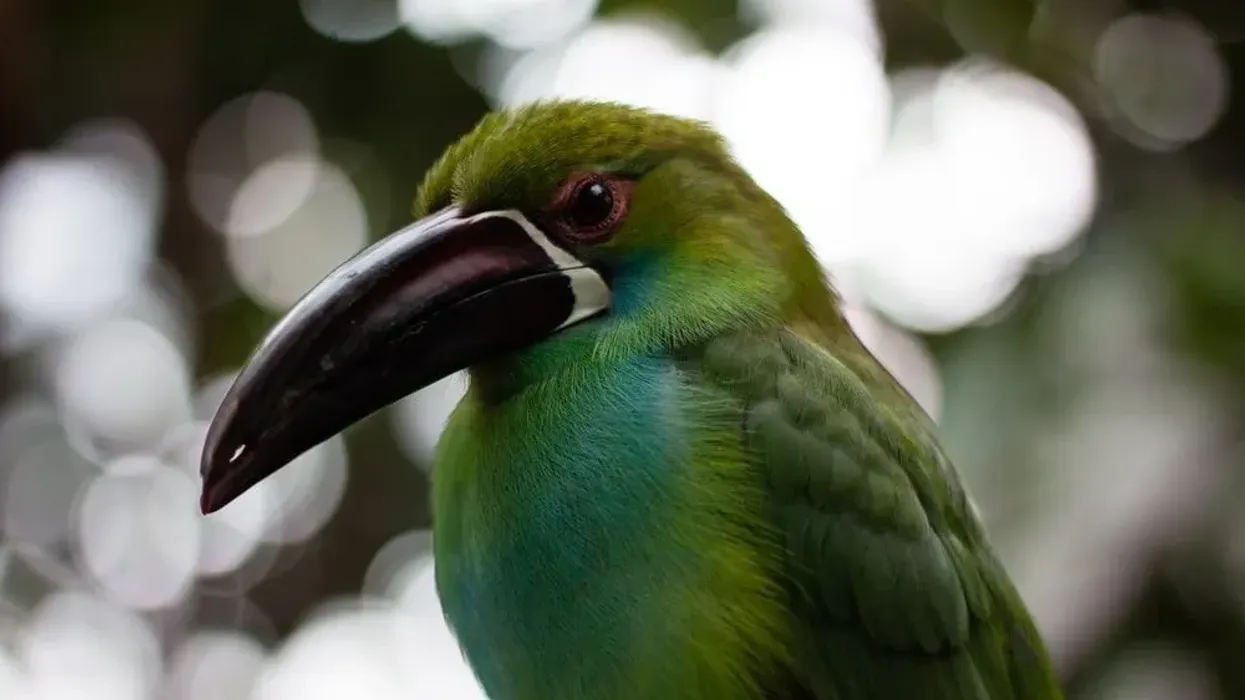There are a total of three types of guillemot namely the black guillemot (Cepphus grylle), pigeon guillemot (Cepphus columba), and spectacled guillemot (Cepphus carbo). All three species of birds have an overall black color with slight variations in coloration, pattern, and plumage.
The word 'guillemot' refers to a seabird and is pronounced 'gi- la- maat' in American English. Their scientific name is Uria aalge.
These birds are usually seen together in groups and breed in colonies. They spend the winter in the sea and come out to land during summer to breed. These birds are classified as Least Concern birds by the IUCN Red List.
Major threats to this species are predators, oil spills, destruction of habitat, and other man-made disasters. They are territorial beings and become aggressive if nesting regions are threatened in any way. It's best to see them in the months of April to August.
For more relatable content, check out the pigeon guillemot and mottled duck.
Guillemot Interesting Facts
What type of animal is a guillemot?
The guillemot (Uria aalge) is a type of bird that belongs to the kingdom Animalia and order Charadriiformes.
What class of animal does a guillemot belong to?
The guillemot is a type of bird that belongs to class Aves, family Alcidae (Auk), and genus Guillemot.
How many guillemots are there in the world?
A guillemots' population size is estimated at 400,000-1,499,999.
Where does a guillemot live?
Guillemots live in the sea, coasts, and islands range. They are primarily seen in Europe but also in other continents including the United States and other parts of the world.
Their populations were considered to have increased but their numbers started to fall by the turn of the current century. They can be spotted in the Arctic and other regions as well. They prefer resting on rocky terrain.
What is a guillemot's habitat?
Guillemot birds' habitat range constitutes coasts near oceans, seas, and islands. They stay on land during the summer season when they breed which is from April to August hence it's easier to spot them in their range.
When the winter season approaches, they usually stay on water bodies and tend to avoid extreme climates. They can be spotted in the Arctic and other regions as well.
Who do guillemots live with?
Guillemots breed in solitary auks pairs and also in colonies. They are territorial beings and don't like any threats posed to their nesting sites. They are generally sedentary birds and don't migrate to other places even in extreme climates.
How long does a guillemot live?
Guillemots live a maximum of 23 years. The oldest guillemot recorded was a pigeon guillemot which lived for 15 years and two months.
How do they reproduce?
The breeding patterns of all three seabirds are similar. They breed in regions close to the Arctic circle.
They reach sexual maturity at the age of five years and are monogamous. Breeding season for these seabirds begins in May and egg's hatch by June mid to July. Males and females reproduce sexually.
Females don't build a nest instead they lay eggs in rocky slopes, holes, crevices, and other similar spaces during the breeding season. The nesting period lasts 40-45 days and the incubation period lasts 27-29 days. The period may vary slightly.
Females lay one egg per clutch in the nest. The young are completely reliant on its parents for food and shelter and stays in the nest until its independent.
What is their conservation status?
All three auks types of guillemots are classified as Least Concern birds by the International Union For Conservation Of Nature IUCN Red List of Threatened species.
Guillemot Fun Facts
What do guillemots look like?
Guillemots look similar to penguins but they are not related to each other and reside in separate habitats. They look similar to a duck size-wise but these two species are unrelated and only similar in size.
Guillemots are brown above and white below. They have an overall dark plumage. Black guillemots have an overall black plumage.
Their eye is dark in color but with a white eye-ring and this line extends all the way back to its neck. They have bright red feet and they have a small yet pointed bill which is dark-colored on the outside and their mouth is red-colored.
How cute are they?
Guillemots are cute and adorable birds. Black guillemots are easy to identify but the other two birds are equally unique and adorable. They are a must-see for all birdwatching enthusiasts. The most commonly seen guillemot is the black guillemot and they can easily be spotted by their black plumage.
How do they communicate?
Guillemots communicate via songs as well as calls using their throat and bill. They communicate primarily during the breeding season. They also have courtship calls and displays. Apart from this, these birds use whistles, including 'pii-pii' and 'fi-fi-fee-fee', near their nesting cavity and when they are on land post-winter. These birds are territorial and don't welcome intruders.
How big is a guillemot?
The guillemot is 15.78 in (40 cm) in length which is three times bigger than an African pygmy goose which is 12 in (30.48).
How fast can a guillemot move?
A black guillemot bird flies at 12.42 mph (20 kph) using its wings. They are excellent divers and catch most of their prey by diving. Their wings are folded in when diving. The other two guillemots fly at similar speeds. During resting, they prefer sitting on rocky terrain.
How much does a guillemot weigh?
The guillemot weighs 1.52 lb (690 g). The Laysan albatross is one of the heaviest bird species.
What are the male and female names of the species?
A male and female guillemot is not addressed differently. Male and female guillemots are similar in appearance but differ in reproductive functions.
What would you call a baby guillemot?
A young baby guillemot can be referred to as an egg when born and as a nestling, once they hatch. The baby is completely dependent on its parents in the initial few weeks of its life.
What do they eat?
They consume a carnivorous food diet. They consume fish, worms, and mollusks. They are proficient divers which they use to procure food. They prefer fish over any other thing.
Are they dangerous?
No, these birds are not dangerous however, it's safe to maintain a distance while observing these birds in the wild. They don't like being pet or touched in any way. They are scarcely seen in winter hence its best to visit them in summer. Seabirds are known to transmit a range of parasites, viruses, and other diseases.
Would they make a good pet?
No, there are no official records of these seabirds being kept as pets. It's best to observe them in their natural habitat which is in the wild. These birds may be transmitters of disease so it's safe to maintain a distance while observing them in the wild.
Did you know...
The guillemot made its appearance in the film 'The Edge Of The World' produced in 1937. The scene consists of Peter, a character in the movie, with a collector who promises to pay him money if he finds him a guillemont's egg but Peter loses his life trying to reach the egg accidentally.
The black guillemot (Cepphus grylle) and other seabirds stretch their wings out to dry before they prepare themselves for another flight. The black guillemot is a member of the Alcidae family (Auks) similar to puffin birds.
The black guillemot is one of the only types of bird that breeds in Surtsey, Iceland which is a new volcanic island. When a black guillemot pair is found in regions further away from the coast or island, they usually are non-breeding pairs.
What are the different types of guillemots?
The guillemot is a bird that resembles a duck in shape and a penguin in appearance to understand simply. They are not related to either of the species.
These birds live near coasts and islands. They have an overall dark plumage and are rarely seen in winter. During the winter season, they are mostly in water bodies and seldom seen on land.
There are three types of guillemot namely the black guillemot (Cepphus grylle) which is black in color, the pigeon guillemot (Cepphus columba), and the spectacled guillemot (Cepphus carbo) which has a chocolate brown color. All their underparts are white to light-colored and their feet and insider portions of the mouth are red.
All three species are endemic to different regions with the black guillemot being found the most commonly found.
The black guillemot has a striking black appearance which instantly attracts the eye. Apart from this, they have a similar diet and breeding pattern.
Why are guillemot eggs pointed?
Guillemot eggs are usually blue, green to white with certain black splashes on them. Guillemot eggs are pointed and the exact reason behind this was not known until studies were conducted in the field.
This shape is referred to as 'pyriform', something like a pear. The studies found that the pointed shape is in order to allow the egg to roll in an arc, making the eggs more stable on sloping terrains protecting them from falling off.
Other species which build stable nests usually have round to oval-shaped eggs but never with the pointed edge. Isn't that interesting?
Here at Kidadl, we have carefully created lots of interesting family-friendly animal facts for everyone to discover! Learn more about some other birds from our little auk facts and neotropic cormorant facts pages.
You can even occupy yourself at home by coloring in one of our free printable guillemot coloring page










